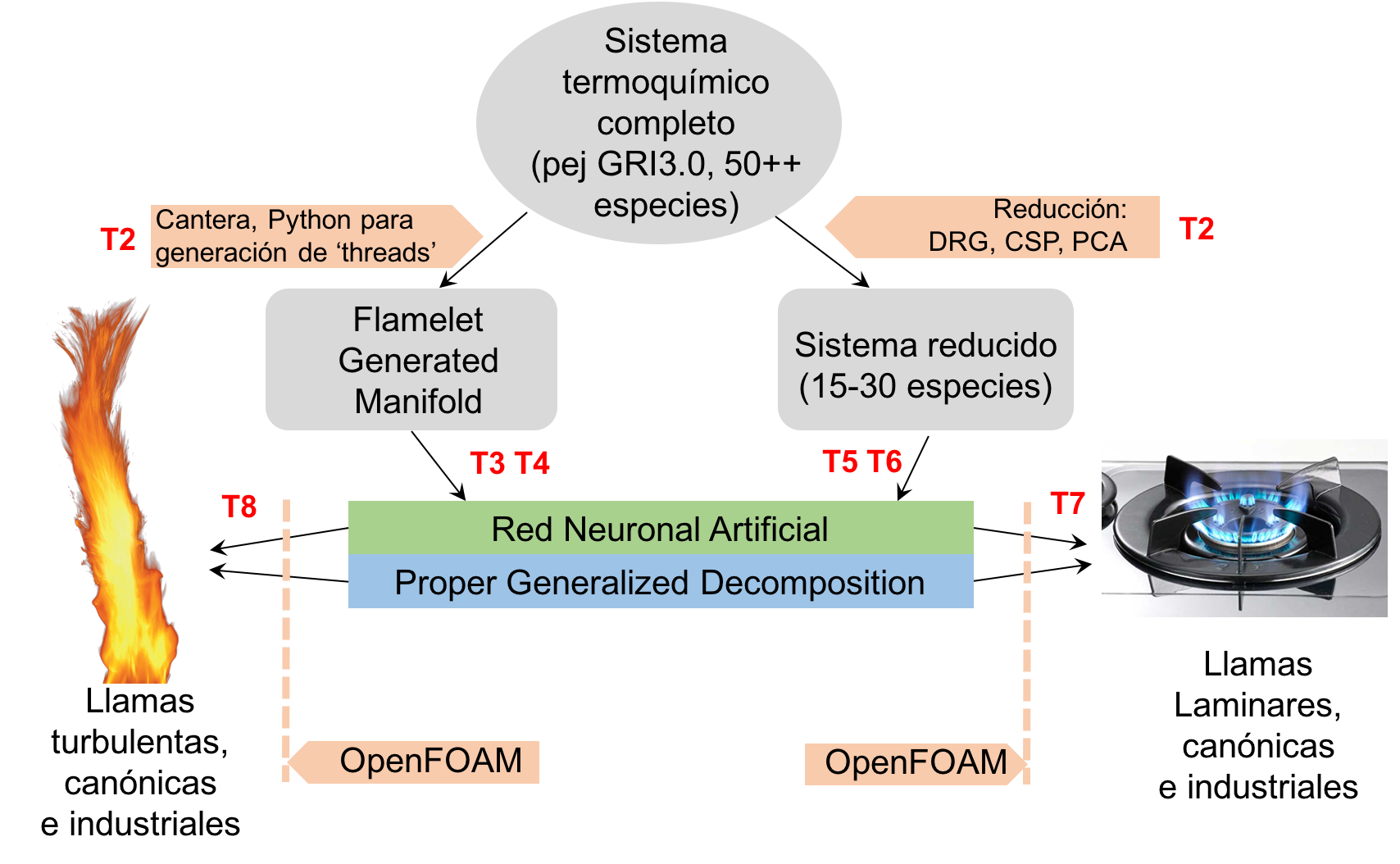Project Description
SAFEComb: High fidelity industrial combustion simulation using reduced order models
As it is the case in many other Engineering fields, computer simulation of combustion processes has become an indispensable tool in equipment and process design.
The usefulness for Industry of the numerical simulation of combustion, using Computational Fluid Dynamics techniques, is however limited by the complexity of the thermochemical system that governs the problem, even for the simplest hydrocarbons. The computational load associated to the calculation of the thermochemistry is the dominant one in the simulation of fluid flow with chemical reaction, to the extent of rendering it unfeasible, in the absence of simplifying assumptions, for most industrial systems.
In the past, the simplicity of practical combustion systems and the less stringent design specifications allowed for simplifications in the description of such thermochemical systems, so that they were rendered computationally tractable. However, the sophistication of the present-day combustion technologies and the greater safety and environmental constraints have made of computer simulation of combustion the field where many companies play out their competitive advantage among their peers.
In this project we tackle the development of Reduced Order Models for combustion systems, for their use in Computational Fluid Dynamics codes, and in particular with the free, open-source code OpenFOAM. These reduced order models will allow for high fidelity simulation in industrial combustion processes, both laminar and turbulent.
The project proposes the use of Flamelet Generated Manifold type models (having a large number of controlling variables, typically more than 3), that will be encapsulated in both Artificial Neural Networks and Proper Generalized Decomposition models.
The proposed developments are rooted in the expertise of the research team, who has been involved in the simulation of industrial combustion since the early 90s. Thus, the team developed in the 2000s a method for the solution of the transport equation for the Probability Density Function in turbulent reacting flows. The team was also pioneering in the proposal (in the 90s) of the use of Artificial Neural Networks for the representation of the thermochemistry in chemically reacting systems. Recently, we have developed our own methodology for producing Flamelet Generated Manifolds.
The exploitation of the results will not be limited to the transfer of the technology to industry. We foresee the publication of the project results in high impact scientific journals, and also the dissemination of the results as free, open-source modules for the OpenFOAM CFD software, that will be distributed through free access repositories such as Github or Bitbucket
Project ENE2016-80143-R SAFEComb Simulación de Alta Fidelidad en COMBustión industrial mediante modelos de orden reducido runs from 30 Dec 16 to 29 Dec 19 and si funded by the Spanish Ministerio de Economía y Competitividad.

